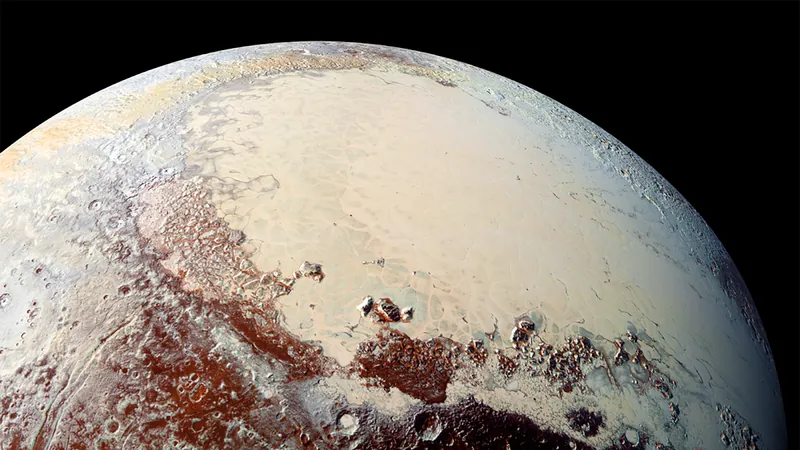
Unlocking Pluto's Secrets: New Mission Could Reveal Hidden Ocean Beneath the Surface
2025-08-12
Author: Yu
A Decade After New Horizons: The Quest Continues
It's been nearly a decade since NASA's New Horizons spacecraft made its historic flyby of Pluto, unveiling a stunning world of icy terrain and intriguing geological features. As scientists continue to analyze the wealth of data gathered during that brief encounter, one tantalizing question looms: is there an ocean lurking beneath Pluto's frigid surface?
Introducing Persephone: The Mission to Pluto's Depths
In a bold move, planetary scientist Carly Howett from the University of Oxford and her team propose a follow-up mission named Persephone, after the Greek queen of the underworld. This mission aims to delve deeper into Pluto's mysteries by assessing the potential of a subsurface ocean. This ambitious mission would take decades to complete—nearly 50 years, in fact—challenging our technological limits in space exploration.
Persephone’s Goals: Investigating Pluto's Oceanic Possibilities
Historically, the idea of a liquid ocean beneath Pluto seemed far-fetched. Most icy bodies freeze their water over billions of years. However, new findings suggest that interactions with Charon, Pluto's massive moon, could keep an ocean warm enough to remain liquid. Persephone would conduct detailed studies to confirm this possibility, including investigating the planet's surface shape for hints of subsurface activity.
Innovative Instruments and Long-Term Study
Equipped with advanced tools and instruments adapted from previous missions, Persephone aims to orbit Pluto for over three years, much longer than New Horizons. This would allow for a comprehensive examination of the dwarf planet, including monitoring geological changes, and searching for signs of ongoing activity that may indicate a hotter internal environment.
Crucial Atmospheric Studies and the Environment Around Pluto
Persephone would also analyze Pluto's atmosphere, conducting mass spectrometry to decipher its composition. Strikingly, it appears Pluto is gradually losing parts of its atmosphere to Charon, a phenomenon worth investigating further. Furthermore, the mission might explore Pluto's other satellites, seeking to understand their composition and the debris that formed them.
The Challenges of Long-Distance Space Exploration
Launching Persephone will not be easy. The journey will require advanced technology, including five Next-Generation Radioisotope Thermoelectric Generators, due to the extended travel time and extreme temperatures in space. With a projected mission cost of around $3 billion, securing funding will be a significant hurdle.
A Vision for the Future of Space Exploration
Despite the challenges, Howett and her team remain optimistic. As they gather data from past missions, they aim to refine their approach for future explorations. Persephone could embody decades of scientific advancement, offering insights into our solar system while passing knowledge down through generations of scientists.
Looking Ahead: The Future of Pluto Research
With launch windows available between 2029 and 2032, Persephone holds the promise of uncovering more secrets of Pluto than ever before. As we stand on the brink of a new era in cosmic exploration, the quest to understand the icy dwarf planet continues—ushering in the potential to unlock the mysteries that lie beneath its surface.


 Brasil (PT)
Brasil (PT)
 Canada (EN)
Canada (EN)
 Chile (ES)
Chile (ES)
 Česko (CS)
Česko (CS)
 대한민국 (KO)
대한민국 (KO)
 España (ES)
España (ES)
 France (FR)
France (FR)
 Hong Kong (EN)
Hong Kong (EN)
 Italia (IT)
Italia (IT)
 日本 (JA)
日本 (JA)
 Magyarország (HU)
Magyarország (HU)
 Norge (NO)
Norge (NO)
 Polska (PL)
Polska (PL)
 Schweiz (DE)
Schweiz (DE)
 Singapore (EN)
Singapore (EN)
 Sverige (SV)
Sverige (SV)
 Suomi (FI)
Suomi (FI)
 Türkiye (TR)
Türkiye (TR)
 الإمارات العربية المتحدة (AR)
الإمارات العربية المتحدة (AR)